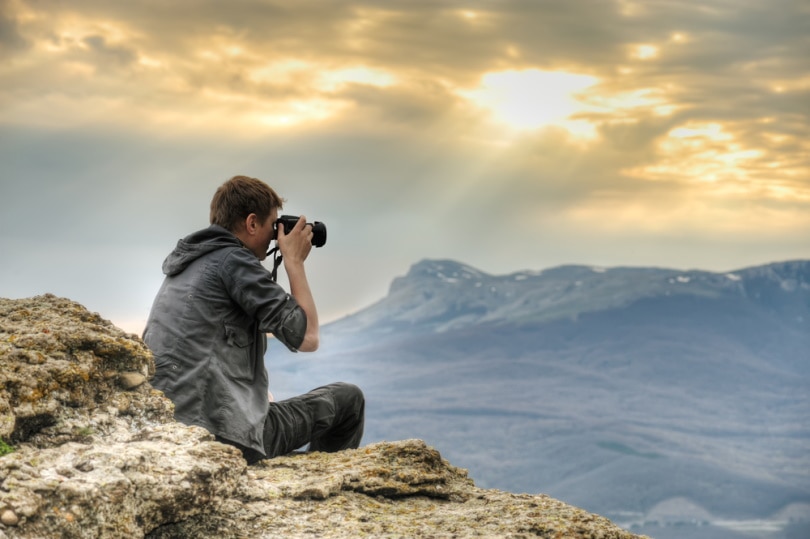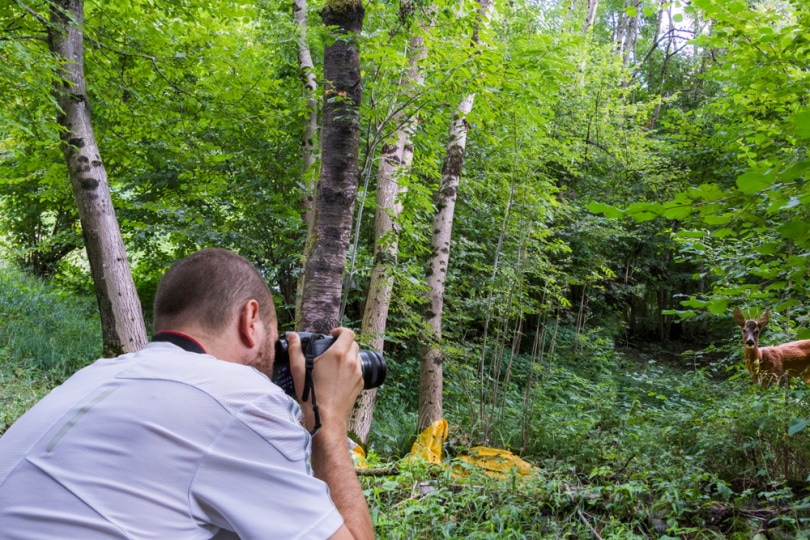What Is the Ideal Focal Length for Landscape Photography?
Last Updated on

Whether you love to photograph dense, sprawling forests or desert sunsets, the type of lens you choose determines the shot. For gorgeous landscape shots, wide-angle lenses are the preferred type of lens. Specifically, 14-millimeter (mm) to 24mm lenses are perfect for capturing full panoramic landscapes. You can use lenses with focal lengths up to 35mm, but those photos feel more normal and less landscape-y.
If you go any lower, the shot risks straying to fisheye territory, which is the opposite of what you’re going for with most landscape and nature photography. The key to successful landscape photos is to strike a balance of wide, but not too wide. It’s a careful balance that you learn over time and with a lot of practice.

What Is Wide Angle Focal Length?
The human eye has a focal length of about 50mm, so anything less than that is technically a wide angle. Depending on how low you go, you can capture different types of landscapes and completely change the style of the shot. Let’s take a look at some common wide-angle lengths.

- 14mm: This is probably the lowest you’ll ever go for a wide-angle landscape shot. It’s ideal for highly detailed landscapes, while more barren scenery can make it feel too wide and boring. Proper use of foreground is key when using this lens because a detailed foreground gives viewers something to focus on while the background adds majesty and beauty.
- 18mm: This is a great compromise between 14mm and narrower lenses. You can capture panoramic views without the risk of introducing distortion to the photo, which is why it’s widely used for nature photography. It strikes a good balance of focus on detailed subjects without feeling too wide.
- 21mm: This is probably the narrowest of the wide-angle lenses, and a very good one at that. These lenses are adept at capturing wide-open spaces without feeling too narrow. Notably, 21mm lenses give those wide shots crisp edges, while wider lenses can feel too unfocused. It’s not too wide for most situations, but not too narrow either.
- 24mm: This is the edge between wide-angle photography and more focused photos. This can be used for narrower landscape shots as well as wide street or wedding photography, but it can be too restrictive for larger scenery. Once you start getting larger than those lenses, your shots get narrower and more focused. While that can be great for contained, focused shots, they don’t fully encapsulate the majesty of panoramic shots. For example, 27mm is great for nature photos with a main subject, but distortion can be a real problem.

Can You Use Regular Lenses for Landscape Photography?
Absolutely. There are few hard and fast rules for photography, like many forms of art. The problem is that narrower lenses demand more focused shots that can’t fully capture many landscapes.
In general, 35mm lenses are great for getting shots that feel like something you’d see with your own eyes without feeling too narrow. Anything between that and 50mm is good for more intimate landscape shots, whereas intimacy is reduced with wider shots.

Conclusion
Landscape photography is one of the most popular niches in the art, from towering, forbidding mountain ranges to more close-range and intimate photos. While 14mm to 24mm is ideal for landscapes, you can play around with other focal lengths to see what suits your style and scenery best.
Featured Image Credit: Tania Zbrodko, Shutterstock
About the Author Codee Chessher
Codee Chessher is a freelance writer with extensive knowledge on a variety of subjects that include travel, sound engineering, automotive, optics, DIY, pets, and more. He has a colorful past that includes building schools and commercial driving, but the written word was always his first love and continues to be his passion. He believes there's nothing a well-worded sentence can't accomplish.
Related Articles:
What Is the Best Binocular Magnification for Hunting? Optical Features Explained
How to Clean a Refractor Telescope: Step-by-Step Guide
How to Clean a Telescope Eyepiece: Step-by-Step Guide
How to Clean a Rifle Scope: 8 Expert Tips
Monocular vs Telescope: Differences Explained (With Pictures)
What Is a Monocular Used For? 8 Common Functions
How to Clean a Telescope Mirror: 8 Expert Tips
Brightfield vs Phase Contrast Microscopy: The Differences Explained
